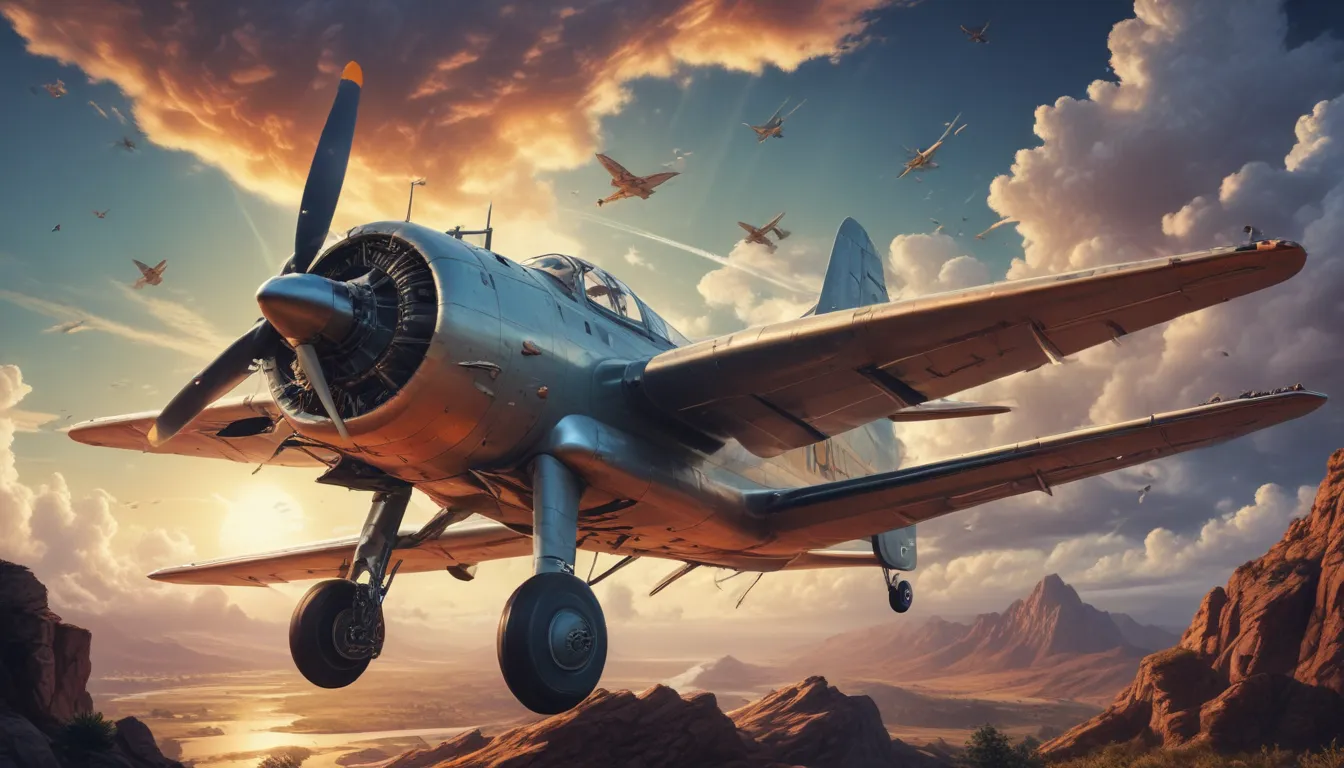The pictures in our articles might not always show exactly what the text is talking about. We use these images to make the article more interesting and eye-catching. They are there to add to the text, but not to replace it or show every detail.
Aviation is a captivating field that has transformed the way we travel and perceive the world. From the historic flight of the Wright brothers to the advanced technologies of modern airplanes, the evolution of aviation has been nothing short of remarkable. Whether you're a seasoned traveler or simply curious about the world of aviation, there are several captivating facts that are sure to pique your interest. Join us as we explore nine intriguing facts about aviation that will leave you in awe of this incredible industry.
Unveiling the Past: The Wright Brothers Revolutionize Flight
On December 17, 1903, in Kitty Hawk, North Carolina, Orville and Wilbur Wright accomplished the unimaginable - they successfully flew their powered aircraft, the Wright Flyer, for a distance of 120 feet in just 12 seconds. This groundbreaking achievement marked the dawn of modern aviation, setting the stage for the incredible advancements to come.
The Concorde’s Supersonic Speed: A Leap in Travel Technology
Introduced in 1976, the Concorde was a legendary supersonic passenger jet capable of flying at twice the speed of sound. With a remarkable speed of 1,354 miles per hour, passengers could reach their destination in half the time of a traditional aircraft. Although the Concorde retired in 2003, its era of rapid travel remains a testament to the progress of aviation technology.
The Airbus A380: A Skyborne Behemoth
The Airbus A380 stands as the largest passenger aircraft in the world, boasting an impressive length of 239 feet and a wingspan of 261 feet. With a seating capacity of over 500 passengers, the Airbus A380 redefines the concept of air travel, offering unparalleled comfort and space for travelers.
Amelia Earhart: A Trailblazer in Aviation History
In 1932, Amelia Earhart made history by becoming the first woman to fly solo across the Atlantic Ocean. Her courageous feat inspired a generation of women to pursue their dreams in the field of aviation, leaving an indelible mark on the industry.
Autopilot: Revolutionizing Navigation in the Skies
In 1914, American inventor Lawrence Sperry introduced the world to autopilot, a revolutionary technology that enabled aircraft to navigate and maintain course without constant manual control. This innovation has become a cornerstone of modern aviation, enhancing safety and efficiency in air travel.
The Black Box: Safeguarding Flight Data
The black box, officially known as the flight recorder, plays a vital role in ensuring flight safety by recording critical flight data and voice recordings in the event of an accident. This invaluable information has been instrumental in enhancing aviation safety standards and investigating the causes of incidents.
The Jet Engine Revolution: Propelling Aviation Forward
The development of jet engines in the 1930s and 1940s revolutionized aviation, significantly increasing the speed and efficiency of air travel. These engines, based on the principle of jet propulsion, paved the way for faster and more reliable aircraft, shaping the future of aviation.
Commercial Air Travel: Connecting the World
The rise of commercial air travel has transformed the world, connecting people across continents and facilitating global business, tourism, and cultural exchange on an unprecedented scale. With the ability to travel across the globe within hours, air travel has become an essential component of modern life.
The Evolution of Space Travel: From Aviation to Exploration
Aviation has played a crucial role in the evolution of space travel, serving as a stepping stone to human missions beyond Earth. The advancements in aviation technology, including rocketry and navigation systems, have expanded our understanding of the universe and enabled groundbreaking achievements in space exploration.
In conclusion, aviation stands as a fascinating industry that continues to push the boundaries of transportation and human ingenuity. From historical milestones to technological marvels, the world of aviation is filled with captivating facts waiting to be discovered. Whether you're intrigued by the engineering feats of airplanes or the scientific principles of flight, exploring aviation can broaden your horizons and deepen your appreciation for the wonders of the skies. Next time you board a plane or gaze up at the clouds, take a moment to reflect on the incredible achievements that have made air travel possible.
Frequently Asked Questions
Q: How do airplanes stay in the air?
A: Airplanes stay airborne through the principles of aerodynamics, with the shape of the wings generating lift that counteracts gravity.
Q: How fast can an airplane fly?
A: Commercial airliners typically cruise at speeds of around 500 to 600 miles per hour, while military fighter jets can exceed Mach 2.
Q: How many airports are there in the world?
A: According to the International Civil Aviation Organization (ICAO), there are over 40,000 airports worldwide, ranging from major international hubs to smaller airstrips.
Q: How safe is air travel?
A: Air travel is considered one of the safest modes of transportation, thanks to strict safety measures and advanced technology.
Q: What is the future of aviation?
A: The future of aviation holds exciting possibilities, including advancements in electric and autonomous aircraft, supersonic travel, and sustainable fuel options.
Aviation's rich history and exciting future offer a world of possibilities for exploration and discovery. As you journey through the skies, remember the incredible achievements and innovations that have shaped the world of aviation. Fly high, and let your curiosity soar!






